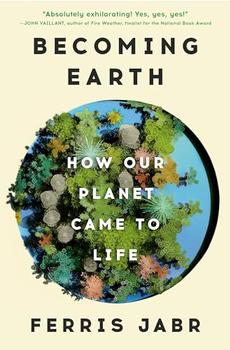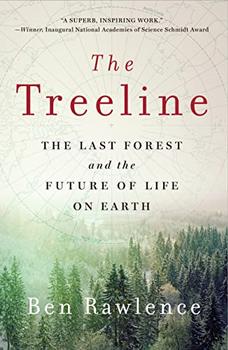Summary | Excerpt | Discuss | Reviews | Beyond the book | Read-Alikes | Genres & Themes | Author Bio

How Our Planet Came to Life
by Ferris JabrA vivid account of a major shift in how we understand Earth, from an exceptionally talented new voice. Earth is not simply an inanimate planet on which life evolved, but rather a planet that came to life.
One of humanity's oldest beliefs is that our world is alive. Though once ridiculed by some scientists, the idea of Earth as a vast interconnected living system has gained acceptance in recent decades. We, and all living things, are more than inhabitants of Earth—we are Earth, an outgrowth of its structure and an engine of its evolution. Life and its environment have coevolved for billions of years, transforming a lump of orbiting rock into a cosmic oasis—a planet that breathes, metabolizes, and regulates its climate.
Acclaimed science writer Ferris Jabr reveals a radical new vision of Earth where lush forests spew water, pollen, and bacteria to summon rain; giant animals engineer the very landscapes they roam; microbes chew rock to shape continents; and microscopic plankton, some as glittering as carved jewels, remake the air and sea.
Humans are one of the most extreme examples of life transforming Earth. Through fossil fuel consumption, agriculture, and pollution, we have altered more layers of the planet in less time than any other species, pushing Earth into a crisis. But we are also uniquely able to understand and protect the planet's wondrous ecology and self-stabilizing processes. Jabr introduces us to a diverse cast of fascinating people who have devoted themselves to this vital work.
Becoming Earth is an exhilarating journey through the hidden workings of our planetary symphony—its players, its instruments, and the music of life that emerges—and an invitation to reexamine our place in it. How well we play our part will determine what kind of Earth our descendants inherit for millennia to come.
In Becoming Earth, Jabr travels from the rainforest to Siberia, from caves deep within Earth's crust to towers thousands of feet above the surface, and along the way introduces the reader to scientists whose work is awakening humanity to the crucial connections between all living things. We meet cave-diving microbiologists, engineers growing kelp forests for carbon storage, a museum curator studying plastic pollution via autopsies on ocean mammals, and more. The book offers a behind-the-scenes glimpse into the planet's physical and biological forces acting upon each other in reciprocal and significant ways, including the impact of humans; Jabr soberly explains the climate crisis and humanity's responsibility for it while continuously emphasizing a path forward...continued
Full Review
 (792 words)
(792 words)
(Reviewed by Rose Rankin).
 As Ferris Jabr describes in Becoming Earth: How Our Planet Came to Life, he and his spouse discovered an all-too-common problem when they tried to plant a new garden—ruined, lifeless soil. Despite our millions of acres of farmland, the intensity of modern agriculture, grazing, deforestation, and land disturbance have severely depleted soils and the nutrients they contain that support crop growth. Jabr quotes a 2021 study that revealed that "about one third of agricultural land across the Corn Belt in the United States has already lost all of its topsoil."
As Ferris Jabr describes in Becoming Earth: How Our Planet Came to Life, he and his spouse discovered an all-too-common problem when they tried to plant a new garden—ruined, lifeless soil. Despite our millions of acres of farmland, the intensity of modern agriculture, grazing, deforestation, and land disturbance have severely depleted soils and the nutrients they contain that support crop growth. Jabr quotes a 2021 study that revealed that "about one third of agricultural land across the Corn Belt in the United States has already lost all of its topsoil."
This isn't a new problem, however; agriculture is thousands of years old, and by the 19th century, farmers were using a variety of fertilizer to replenish soils. These ...

If you liked Becoming Earth, try these:

by Ben Goldfarb
Published 2024
An eye-opening account of the global ecological transformations wrought by roads, from the award-winning author of Eager.

by Ben Rawlence
Published 2023
In the tradition of Elizabeth Kolbert and Barry Lopez, a powerful, poetic and deeply absorbing account of the "lung" at the top of the world.
The purpose of life is to be defeated by greater and greater things.
Click Here to find out who said this, as well as discovering other famous literary quotes!